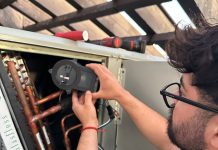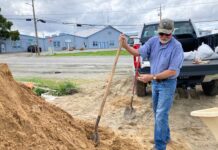How to make great coffee at home
By Dmitri Fridman
For many people, making a good cup of coffee is a daunting
proposition but it shouldn’t be. Following a few simple steps and
using a couple of basic and inexpensive pieces of equipment, anyone
can become a coffee-making super hero. You can enjoy that morning
cup of coffee that will rival any coffee shop.
How to make great coffee at home
By Dmitri Fridman
For many people, making a good cup of coffee is a daunting proposition but it shouldn’t be. Following a few simple steps and using a couple of basic and inexpensive pieces of equipment, anyone can become a coffee-making super hero. You can enjoy that morning cup of coffee that will rival any coffee shop.
Brewing a great cup of coffee is not at all different from creating a delicious meal. It’s important to start with the freshest and highest quality ingredients. You must have a recipe and apply a small measure of finesse. That is, you have to follow the recipe with a degree of precision. No pinch of this and a dash of that please, we are making coffee here! Here are the five key elements necessary for great coffee.
Fresh roasted beans: Statistically, 90 percent of coffee sold in the nation is stale. Just because you buy whole beans doesn’t mean it is fresh. Coffee is a perishable product and is best used within the first 10 days after the roast. After 30 days, the difference in flavor is quite obvious. Take a closer look at your supermarket shelves. Some of the coffees I’ve seen had expiration dates of nine months out! If you are not using fresh beans, the other four steps are not going to give you much improvement.
The grind: To get the most out of your beans grind it just before you brew. Again it has to do with coffee going stale.
Once the whole bean is ground, oxidation or staling occurs at an exponentially faster rate. In an extreme example of a very fine espresso grind, the coffee will stale within minutes after it is ground. The seven gram dose for a single espresso, in a whole bean form, will cover an area of two-square inches (only the surface of the bean is exposed to air). The same seven grams, when finely ground and arranged so that every particle just touches each other, will cover an area of three-square feet. Every tiny granule is exposed to air and begins oxidizing. If you buy pre ground coffee, it has most likely staled before it hit the shelf.
Water; 98 percent of your cup of coffee is water. The better your water tastes the better your coffee tastes. However, water is a solvent. If it is too pure, such as distilled or reverse osmosis, it will extract too much of the bitter compounds and your coffee will be over extracted. Filtered water works great.
Water temperature: In order to extract full flavor water needs to be hot. In fact, it needs to be very hot, 205 degrees, which is just off from boil. This step is absolutely crucial in achieving a full flavored cup of coffee.
The recipe: The most common mistake people make is the coffee to water ratio. You really have to be on top of things, be precise and follow the recipe. If you have a scale, use six grams of coffee for every three ounces of water, otherwise two heaping tablespoons coffee for every 10 ounces of water.
Brewing: Brewing time or dwell time is directly proportional to grind and to your brewing method. Most brewing methods will require different grind and different brew times.
Brewing with French press, for example, will require coarse grind and will take four minutes to brew. The Melita cone, on the other hand, will take a finer grind and will be ready to drink in about two minutes.
In my own preparation I use the Melita cone because it is inexpensive and easy to use and doesn’t require a fancy grinder. The basic electric blade grinder will work fine. It’s the way I make my coffee every morning.
My method starts with a ten-ounce mug. Boil double the amount of water needed (20 ounces). While the water is boiling, grind two heaping tablespoons (and I mean heaping) of coffee. The grind should be a little finer than medium, it should feel like sand.
Place the filter-lined cone on top of a mug. When the water comes to a boil, pour 10 ounces of water in a measuring cup and pour it over the filter. Once the water collects in the mug, pour it out. This does three things: Heats the measuring cup, the mug and rinses the filter of its paper taste.
Next, fill the filter with the coffee grounds take the rest of your water and drizzle about one ounce over the grounds in a circular motion. The goal is to wet all the grounds. Let the moist grounds sit for 20 seconds or so. The coffee will plume and bubble releasing Co2, if it’s fresh. Now, pour the rest of the water in while stirring the coffee. It should drain in about two minutes. If it takes longer than that, the grind is too fine. If it drains faster, then the grind is too coarse.
This may seem rather involved, however it is quite simple in reality. After a couple of times this will become second nature. More importantly, once you taste the results, I think, you’ll store your electric coffee maker in the attic.
Dmitri Fridman is the founder of Vertigo Coffee, which he roasts at his San Juan Bautista home. He can be reached at Dm****@***********ee.com or visit www.vertigocoffee.com.









